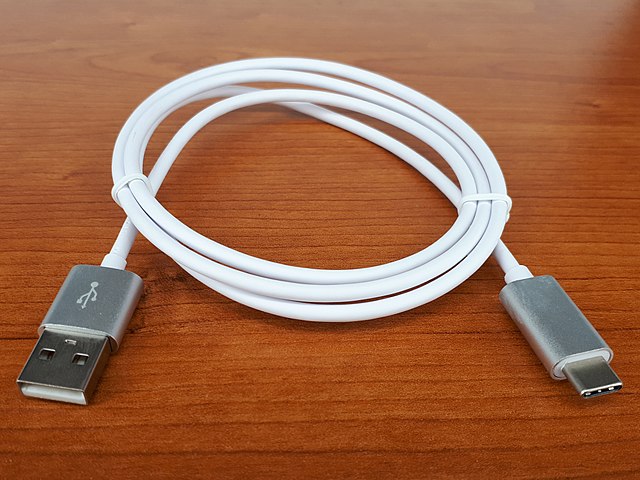A power cable is an electrical cable, an assembly of one or more electrical conductors, usually held together with an overall sheath. The assembly is used for transmission of electrical power. Power cables may be installed as permanent wiring within buildings, buried in the ground, run overhead, or exposed. Power cables that are bundled inside thermoplastic sheathing and that are intended to be run inside a building are known as NM-B.
A USB-C power cable.
A high-voltage cable designed for 400 kV. The large conductor in the center carries the current, smaller conductors on the outside act as a shield to equalize the voltage stress in the thick polyethylene insulation layer.
An electrical cable is an assembly of one or more wires running side by side or bundled, which is used as an electrical conductor to carry electric current.
Flexible mains cable with three 2.5 mm solid copper conductors
6 inch (15 cm) outside diameter, oil-cooled cables, traversing the Grand Coulee Dam throughout. An example of a heavy cable for power transmission.
Fire test in Sweden, showing fire rapidly spreading through the burning of cable insulation, a phenomenon of great importance for cables used in some installations.
A 250 V, 16 A electrical cable on a reel






